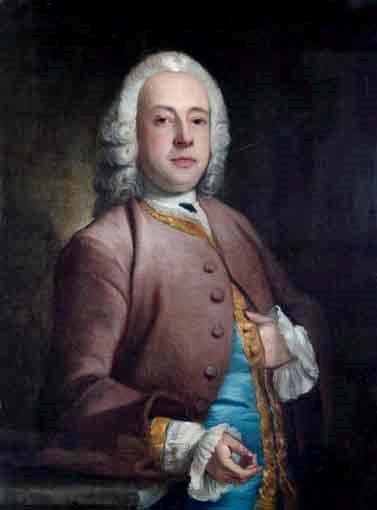
CovSoc member, Peter James, tells us the interesting story of a Warwickshire lad who became famous in the 18th Century. Peter writes….
Fourteen miles from Coventry lies the village of Newton in Warwickshire near the borders with Northamptonshire and Leicestershire. It is where Edward Cave the son of a cobbler was born on 29th February 1691. He attended Rugby School where his literary genius was not appreciated by his fellow pupils. He was frequently bullied by boys who considered themselves higher in rank and expectation. He was expelled after being accused of stealing a cockerel belonging to the headmaster. Edward eventually completed an apprenticeship as a printer and soon after married a young widow. They initially lived in Bow in the East End of London where they ran a post office. He earned extra money by buying newspapers, editing stories and selling them to a London journalist for one guinea a week. By this and other activities he finally made enough money to buy a printing office in the gatehouse of St. John’s Priory in Clerkenwell.
By the eighteenth century the Northern Gatehouse was all that remained of the Priory of St. John of Jerusalem in Clerkenwell. Both the Priory and the Convent of St. Mary had been founded c.1145 by Muriel de Mounteney ( a distant relative of mine ) and her husband Jordan de Bricet. At first the priory was the home of the Order of the Knights Hospitallers. (They evolved and became St. John Ambulance) Some buildings were added later but on 13th June 1381 the priory was burnt down during the Peasants’ Revolt. The priory church fell into disuse from 1540 after the Dissolution.
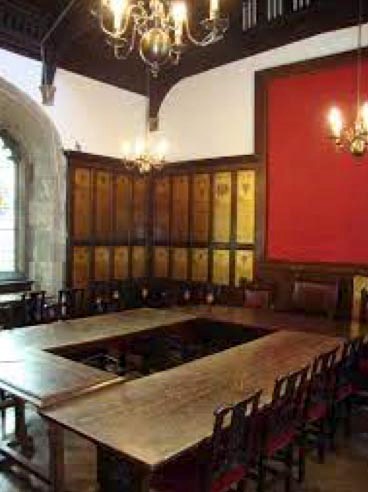
Edward had the idea of publishing a monthly periodical containing stories, poetry, politics and business matters. He failed to convince any printers or booksellers to back him. So he decided to start on his own and launch the “ Gentleman’s Magazine” in 1731. It was the first periodical produced in this country.
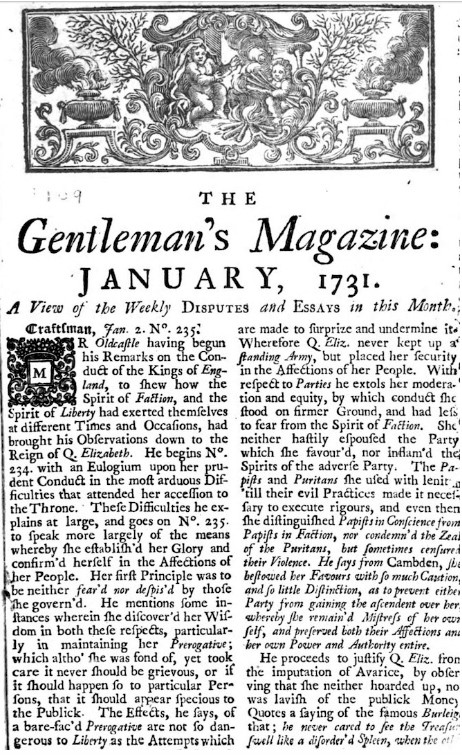
It ran until 1907 containing news, satire, essays, poems and book extracts. A major contributor for over 10 years was Samuel Johnson and it’s believed that George Eliot used the magazine for research while writing Adam Bede. Edward’s office became a meeting place for Dr. Johnson, David Garrick, Oliver Goldsmith, other writers and a number of MPs.
Edward became a wealthy business man and bought Marvel’s Mill in Northamptonshire in 1742.
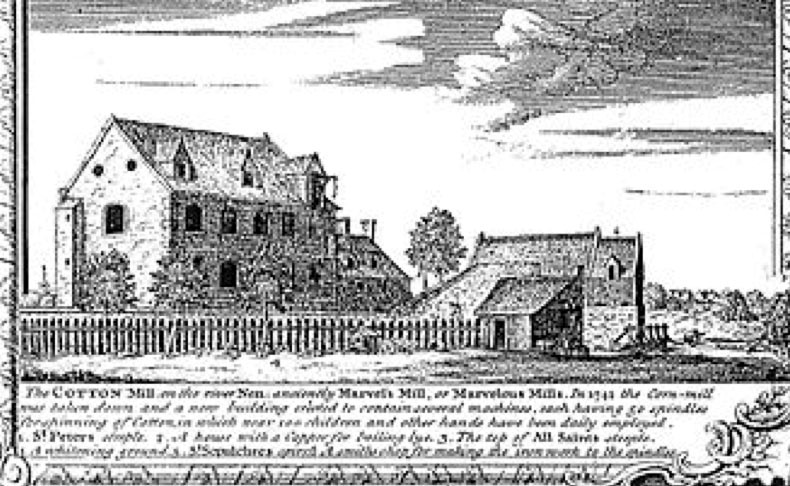
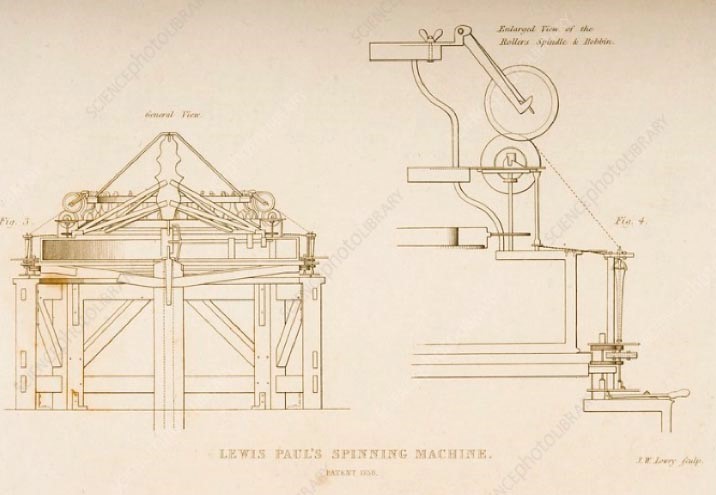
He then acquired a licence from Lewis Paul to use the patented roller spinning machine. The corn mill was converted and utilised 250 spindles to produce cotton, making it the first water driven cotton mill in this country and probably the world. It was a reasonably successful business which continued operating after his death before finally closing in 1761.
Edward Cave died on 10th January 1754 aged 72 years and is buried at St. James Church in Clerkenwell, which was built on the site of St. Mary’s Convent.
His life and achievements are commemorated in Newton the village of his birth where there is both an Edward Cave Play Park and also an Edward Cave Walk.
